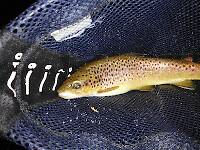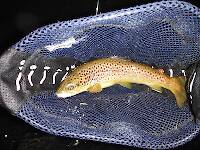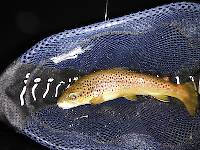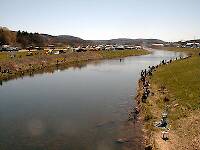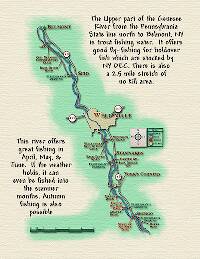
Blue-winged Olives
Baetis
Tiny Baetis mayflies are perhaps the most commonly encountered and imitated by anglers on all American trout streams due to their great abundance, widespread distribution, and trout-friendly emergence habits.
Featured on the forum

Troutnut is a project started in 2003 by salmonid ecologist Jason "Troutnut" Neuswanger to help anglers and
fly tyers unabashedly embrace the entomological side of the sport. Learn more about Troutnut or
support the project for an enhanced experience here.
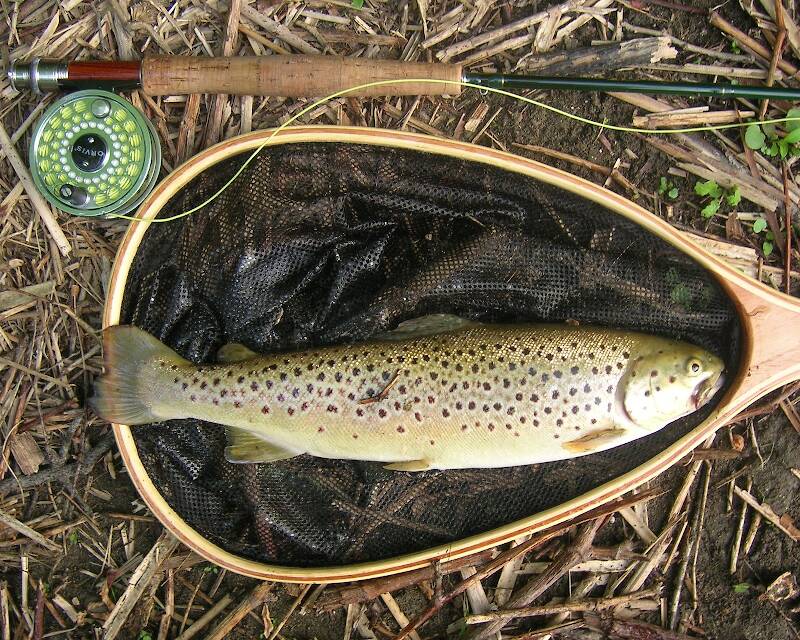

Chris_3g
Posts: 59
Posts: 59
Chris_3g on Jun 7, 2007June 7th, 2007, 4:31 pm EDT
Hey forum members. Thanks for all of the advice and posting and whatnot. It's definitely been a HUGE amount of help reading everyone's opinions.
I have a question though. These are the latest (and largest to date) fish that I've caught. They're both browns, but they're very different, and I just wanted to know why. Even the fight was different for each fish. The 15 incher seemed to want to pull really hard and then give up - this was repeated a few times. The 16.5 incher wanted to fight more consistently, harder, and longer. I assume this is normal, but was curious what you all had to say about it. Thanks!
Chris.
I have a question though. These are the latest (and largest to date) fish that I've caught. They're both browns, but they're very different, and I just wanted to know why. Even the fight was different for each fish. The 15 incher seemed to want to pull really hard and then give up - this was repeated a few times. The 16.5 incher wanted to fight more consistently, harder, and longer. I assume this is normal, but was curious what you all had to say about it. Thanks!
Chris.
Troutnut on Jun 7, 2007June 7th, 2007, 4:57 pm EDT
It looks like the 15 incher is a stocker and the 17 incher is wild, based on the coloration and the beat-up tail on the 15-incher. But I'm not an expert on telling the difference.
Jason Neuswanger, Ph.D.
Troutnut and salmonid ecologist
Troutnut and salmonid ecologist
CaseyP on Jun 8, 2007June 8th, 2007, 3:11 am EDT
hey, great photos! posed the same question myself to a guide one day after spouse and i caught dissimilar wild trouts: "Fish are different for the same reason people are different." hardly scientific, but...
"You can observe a lot by watching." Yogi Berra
GONZO on Jun 8, 2007June 8th, 2007, 4:25 am EDT
Chris,
The smaller brown appears to be recently stocked. The larger one is clearly in better color and condition, and is probably a holdover. Both fish seem to show the traits of a domestic brown trout strain. Although wild browns can display these same traits (especially if the wild population was derived from the same domestic strain), the eroded tail and wrinkled edge of the pectoral fin on the larger, cleaner brown suggest that it originated in a hatchery and has had time to color up and repair some fin damage. (The dorsal fin appears to be folded over, but I suspect that if it were unfolded, you'd also notice a kink in the leading edge about a third of the way up from the base.) Your account of the differences in their fight would reflect that as well. You didn't mention whether that water is known to have a wild population, but at least it appears suitable for allowing some of the stocked fish to survive and even thrive. Most of the difference between these fish can probably be attributed to length of time spent in the stream. If the smaller fish holds over, it will probably look very much like the bigger one in time.
The smaller brown appears to be recently stocked. The larger one is clearly in better color and condition, and is probably a holdover. Both fish seem to show the traits of a domestic brown trout strain. Although wild browns can display these same traits (especially if the wild population was derived from the same domestic strain), the eroded tail and wrinkled edge of the pectoral fin on the larger, cleaner brown suggest that it originated in a hatchery and has had time to color up and repair some fin damage. (The dorsal fin appears to be folded over, but I suspect that if it were unfolded, you'd also notice a kink in the leading edge about a third of the way up from the base.) Your account of the differences in their fight would reflect that as well. You didn't mention whether that water is known to have a wild population, but at least it appears suitable for allowing some of the stocked fish to survive and even thrive. Most of the difference between these fish can probably be attributed to length of time spent in the stream. If the smaller fish holds over, it will probably look very much like the bigger one in time.
Quick Reply
Related Discussions
Topic
Replies
Last Reply
5
May 25, 2012
by Jmd123
by Jmd123
0
Sep 20, 2013
by Jmd123
by Jmd123
1
Jul 12, 2013
by Troutnut
by Troutnut








